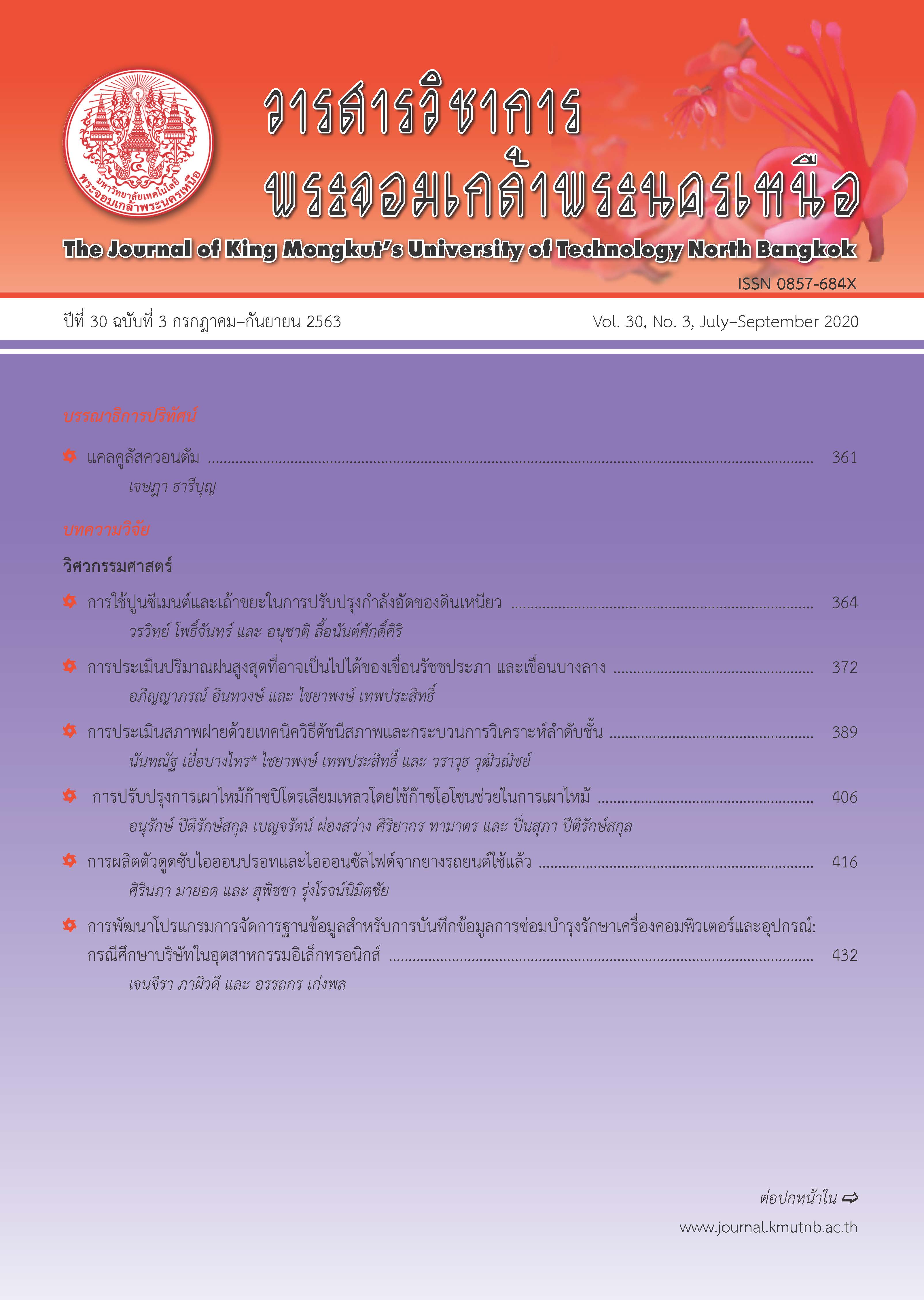Structural Equation Modeling for Analysis of Factors Affecting the Cyber Resilience in Digital Supply Chain for Small and Medium-sized Enterprises
Main Article Content
Abstract
This study aims to 1) study factors affecting the cyber resilience in digital supply chain and 2) analyze the casual model of factors that affecting the cyber resilience in digital supply chain. The research is carry out by the quantitative research methods with sample of 400 from 3,077,822 of Small and Medium-sized Enterprises (SMEs) in Thailand. The researcher collected data using questionnaire and distributed 5 questionnaires per SME. The questionnaires were returned to the response rate at 93.20%. Data was analyzed by Confirmatory Factor Analysis (CFA), and Structural Equation Modeling (SEM). The research found that 1) digital supply chain collaboration (Path Coefficient = 0.11), cyber threat management (Path Coefficient = 0.03) and digital supply chain risk management (Path Coefficient = 0.83) had direct and positive influence to cyber resilience in digital supply chain and had indirect to business continuity management through cyber resilience in digital supply chain, 2) digital supply chain collaboration (Path Coefficient = 0.39) and cyber threat management (Path Coefficient = 0.59) had direct and positive influence to digital supply chain risk management, and 3) cyber resilience in digital supply chain (Path Coefficient = 0.98) has direct and positive to business continuity management. In summary, cyber resilience is a state in which the organizations are robust, agile, capable of coping and recovering to the normal state as soon as possible after cyber attack.
Article Details
The articles published are the opinion of the author only. The author is responsible for any legal consequences. That may arise from that article.
References
[2] P. M. Swafford, S. Ghosh, and N. Murthy, “The antecedents of supply chain agility of afirm: Scale development and model testing,” Journal of Operations Management, vol. 24, no. 2, pp. 170–188, 2006.
[3] Y. Meepetchdee and N. Shah, “Logistical network design with robustness and complexity considerations,” International Journal of Physical Distribution & Logistics Management, vol. 37, no.3, pp. 201–222, 2007.
[4] A. Luma, B. Abazi, B. Selimi, and M. Hamiti, “Comparision of maturity model frameworks in information security and their implementtation,” in Proceedings International Conf on Engineering Technologies (ICENTE'18), Konya, Turkey, 2018, pp.102–104.
[5] M. Christopher and H. Peck, “Building the resilient supply chain,” The International Journal of Logistics Management, vol. 15, no. 2, pp. 1–13, 2004.
[6] M. Windelberg, “Objectives for managing cyber supply chain risk,”International Journal of Critical Infrastructure Protection, vol. 12, pp. 4–11, 2016.
[7] A. Ali, A. Mahfouz, and A. Arisha, “Analysing supply chain resilience: Integrating the constructs in a concept mapping frame-work via a systematic literature review,” Supply Chain Management, vol. 22, no. 1, pp. 16–39, 2017.
[8] S. Parkinson, P. Ward, K. Wilson, and J. Miller, “Cyber threats facing autonomous and connected vehicles: Future challenges,” IEEE Transactions on Intelligent Transportation Systems, vol. 18, no. 11, pp. 2898–2915, 2017.
[9] N. Setthachotsombat, V. U-on, and R. Kaewthammachai, “Supply chain agility and supply chain resilience: An implementation for supply chainof computer industry in Thailand,” Academic Journal Phranakhon Rajabhat University, vol. 8, no.1, pp. 116–127, 2017.
[10] J. F. Hair, W. C. Black, B. J.Babin, and R. E. Anderson, Multivariate Data Analysis A Global Perspective, 7th ed., Pearson, 2010.
[11] S. Karnchanawasri, Applied Statistics for Behavioral Research, 3rd ed., Bangkok: Chulalongkron University Press, (2002) (in Thai).
[12] L. Petchroj and A. Chamniprasas, Research Methodology. Bangkok: Pimdeekarnpim, 2002 (in Thai).
[13] B. M. Byrne, Structural Equation Modeling with AMOS, 2nd ed., Taylor & Francis Group, (2010).
[14] R. Banomyong, “Collaboration in supply chain management: A resilience perspective,” International Transport Forum Discussion Paper, no. 2018–22, 2018.
[15] S. Hassell, P. Beraud, A. Cruz, and G. Ganga, “Evaluating network cyber resiliency methods using cyber threat, vulnerability and defense modeling and simulation,” presented at MILCOM 2012–2012 IEEE Military Communications Conference, 29 Oct.–1 Nov., 2012.
[16] J. Tupa, J. Simota, and F. Steiner, “Aspects of risk management implementation for Industry 4.0,” Procedia Manufacturing, vol. 11, pp. 1223–1230, 2017.
[17] L. Urciuoli. “Cyber resilience: A strategic approach for supply chain management, ”Technology Innovation Management Review, vol. 5, no. 4, 2013.

